This quick lemon vinaigrette is fresh, bright, zingy, and packed with flavor thanks to fresh lemon juice, Dijon mustard, garlic, and herbs! The dressing is perfect for tossing with salads, grains, and veggies!
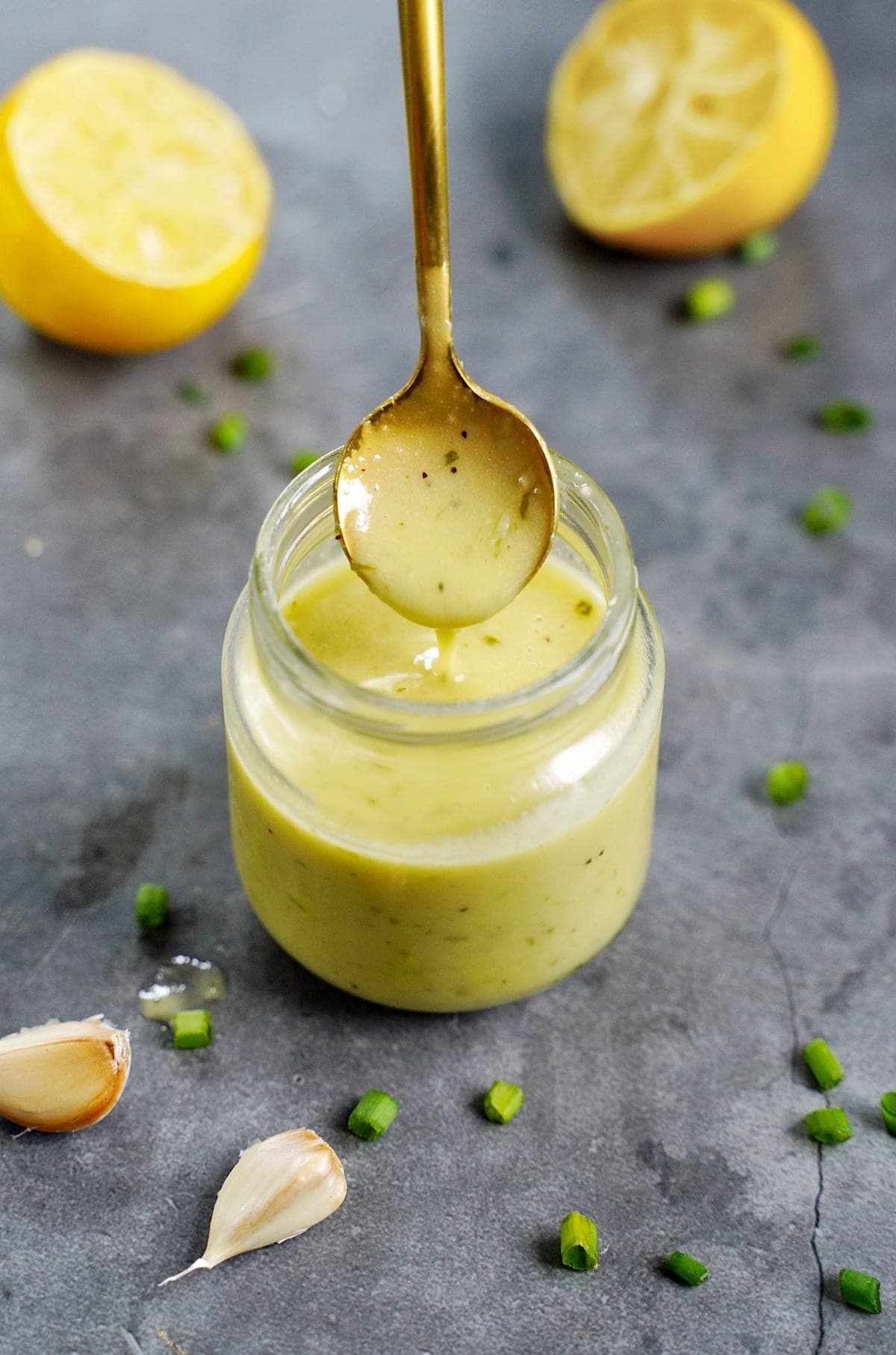
5-Minute Lemon Vinaigrette Dressing
I was speaking to a friend recently, who admitted that she’s only ever used store-bought salad dressings because (she assumed) the effort of making a homemade version didn’t seem worth it. So I immediately sent her this recipe for a basic lemon vinaigrette (and also my tahini dressing) that’s ready in just minutes and with minimal effort! I’m happy to say she loves it!
This simple lemon vinaigrette recipe is so instinctual to me that somehow it didn’t even occur to me to share my preferred recipe. However, in the effort to share how simple it is to make a flavorful, healthy salad dressing at home, I realized this might be helpful to others, too.
When making homemade salad dressing, you not only get a superior flavor, but it’s usually more inexpensive, and you can avoid any unnecessary additives and preservatives. More so, you’re able to tweak each element (including salt and sugar content) to your preferred taste.
This lemon mustard vinaigrette recipe requires just 6 ingredients (plus salt and pepper), several minutes, and a few steps (whisk/shake in a jar/mug or blend for a creamier result). Once ready, this versatile, vibrant dressing is perfect for boosting green salads, roasted veggies (like these air fryer crispy Brussels sprouts), and grain bowls/salads!
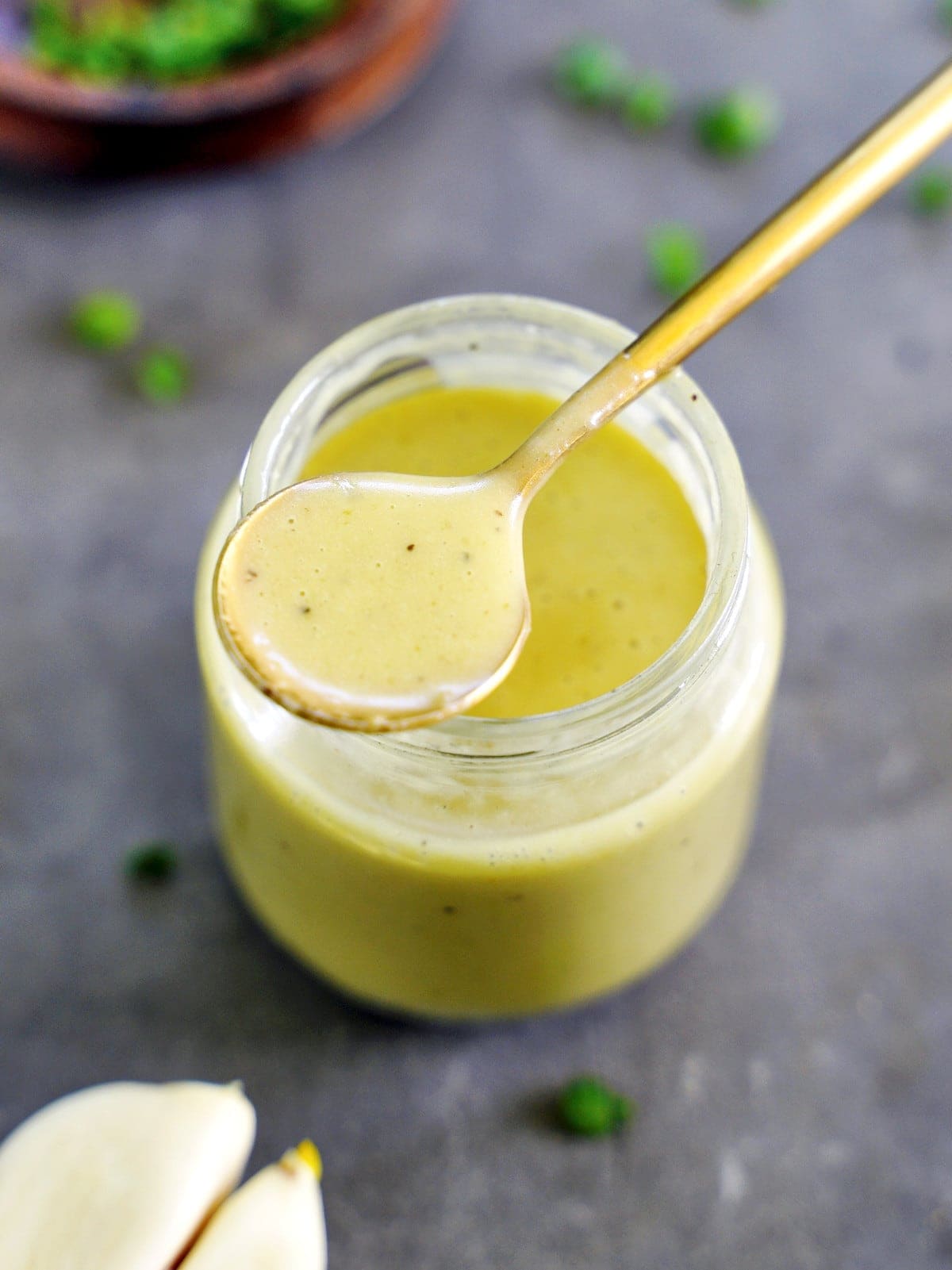
The Ingredients
Make this lemon vinaigrette recipe with just a handful of kitchen/ pantry basics, and is easily adjustable to your desired flavor profile. Plus, it’s gluten-free and dairy-free.
- Lemon Juice: Use fresh lemon juice, not bottled, for the freshest, brightest flavor. Alternatively, for a more traditional vinaigrette, use white wine vinegar.
- Olive oil: Use a high-quality extra-virgin olive oil for the best results and incredible richness.
- Dijon mustard: Provides slight heat and wonderful tangy depth. It also helps to emulsify the lemon vinaigrette dressing.
- Sugar: I used coconut sugar, but you can use any sugar (or sugar-free sweetener for a low-carb option) of your choice. Liquid (such as maple syrup) will work, too. Adjust the amount to taste.
- Garlic: I used a fresh garlic clove (minced or pressed) for more of a kick, but roasted garlic will also work (using an increased amount, but it will slightly thicken the dressing) for this lemon garlic vinaigrette.
- Chives: I love using finely chopped fresh herbs. However, several herbs work in this lemon Dijon vinaigrette, including fresh or dried (though fresh is best) thyme, oregano, rosemary, dill, parsley, etc.
- Salt & black pepper: Adjust the amount to taste.
- Water (optional): For a lighter lemon olive oil dressing. Use it only if you blend the dressing with an immersion blender.
Optional Additions:
- Red pepper flakes to add more heat
- Shallot will provide a milder flavor to substitute the garlic
- Lemon zest for more zinginess, but don’t add too much, or it can be bitter
- Nutritional yeast packs in umami flavor but also a nutty, cheesiness
- Orange juice used alongside the lemon (or even some lime juice) makes for a wonderfully bright citrus dijon dressing
Read the recipe card below for the full ingredients list, measurements, complete recipe method, and nutritional information.
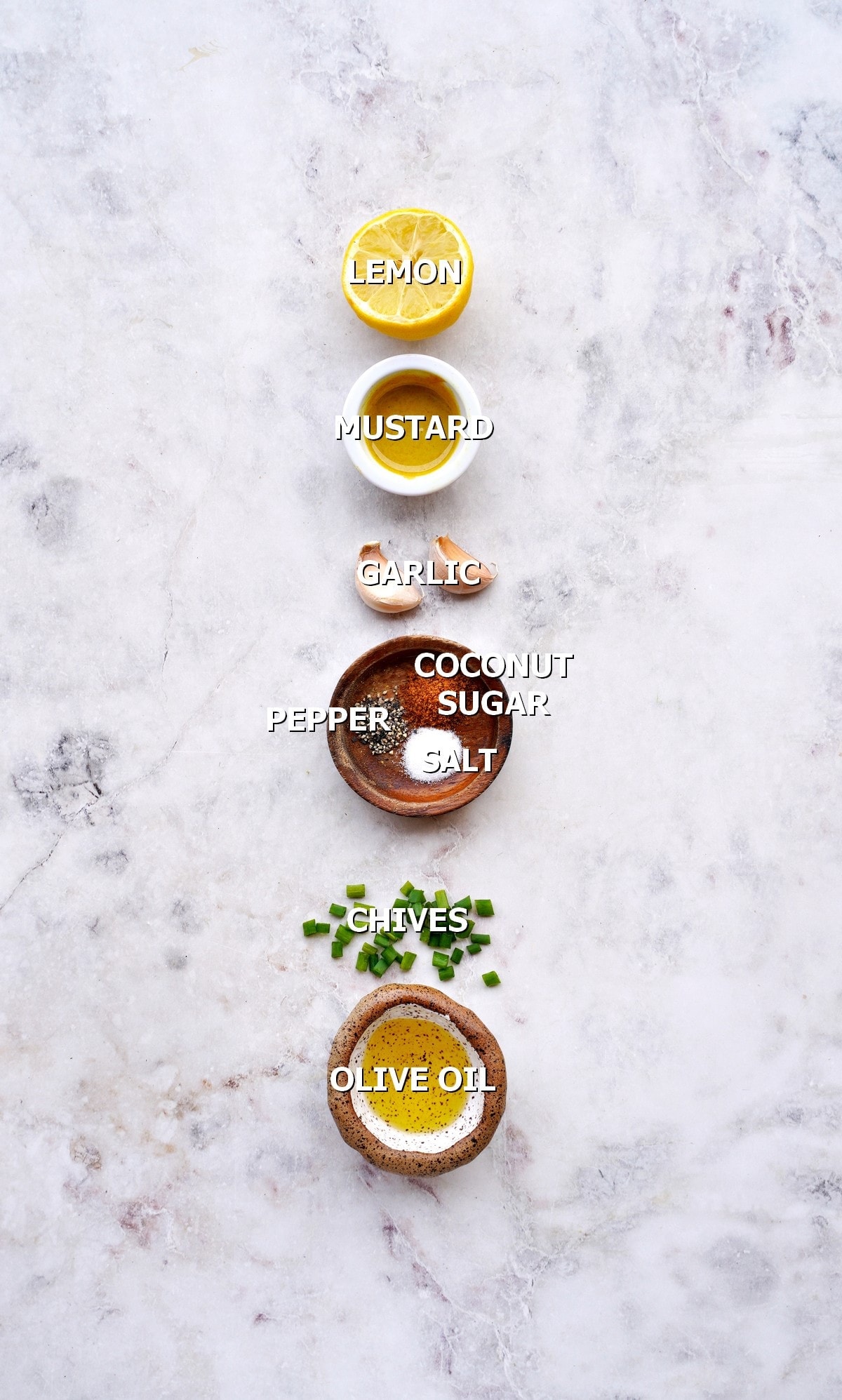
How to Make Lemon Vinaigrette
The method for making this lemon dressing recipe couldn’t be simpler, made with just a few steps.
- Add the lemon juice, mustard, garlic, coconut sugar, salt, pepper, and chopped chives to a jar or mug and whisk.
- Slowly add in the olive oil and keep whisking until the dressing is emulsified.
- For a creamier dressing, blend the mixture with an immersion blender until creamy and add up to 1 1/2 tbsp of water.
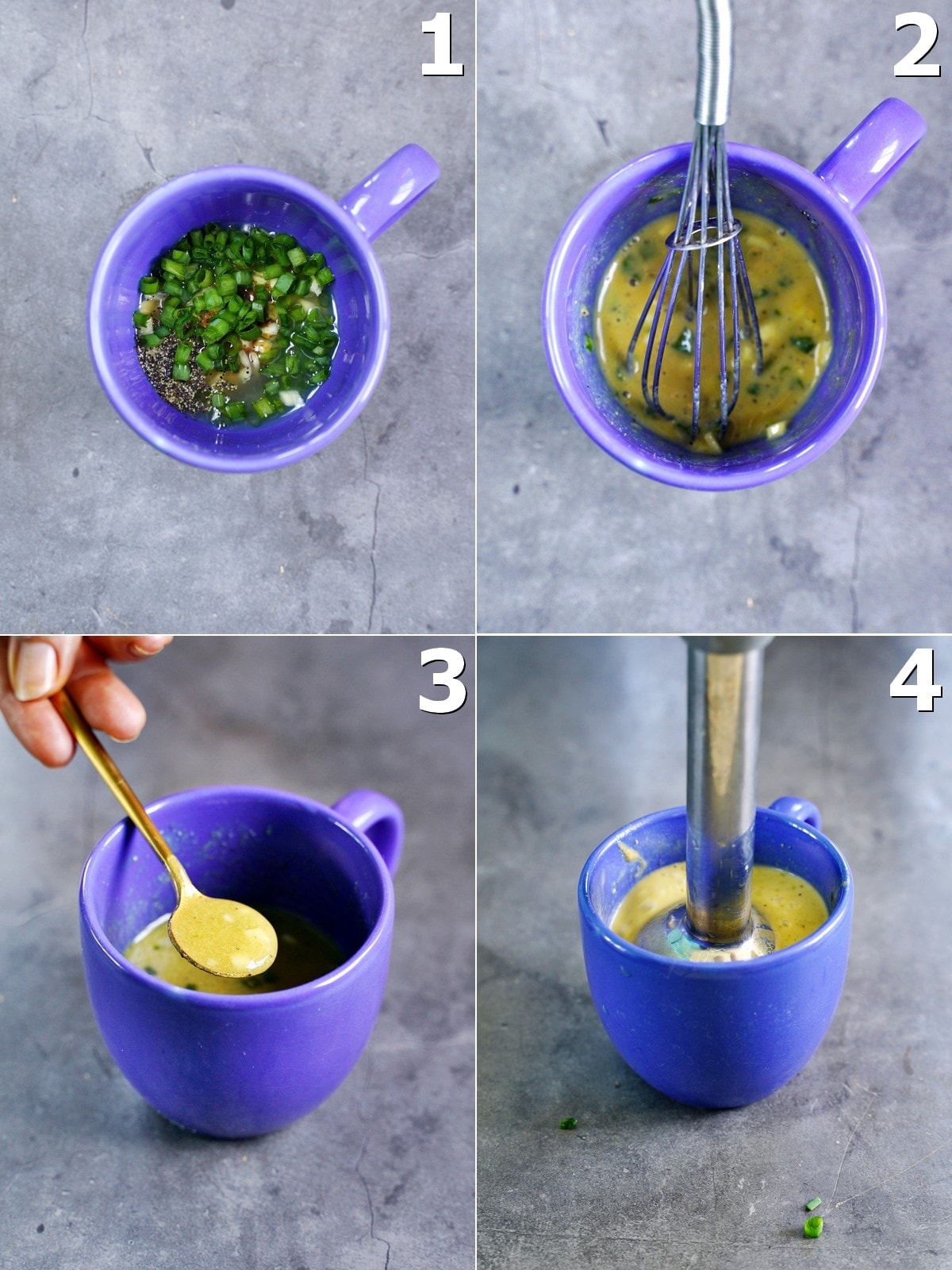
- Then, taste the vinaigrette and adjust any element to your taste, salt, lemon, sugar, etc.
Voilà, the lemon vinaigrette dressing is ready to pour over your salad or dish of choice!
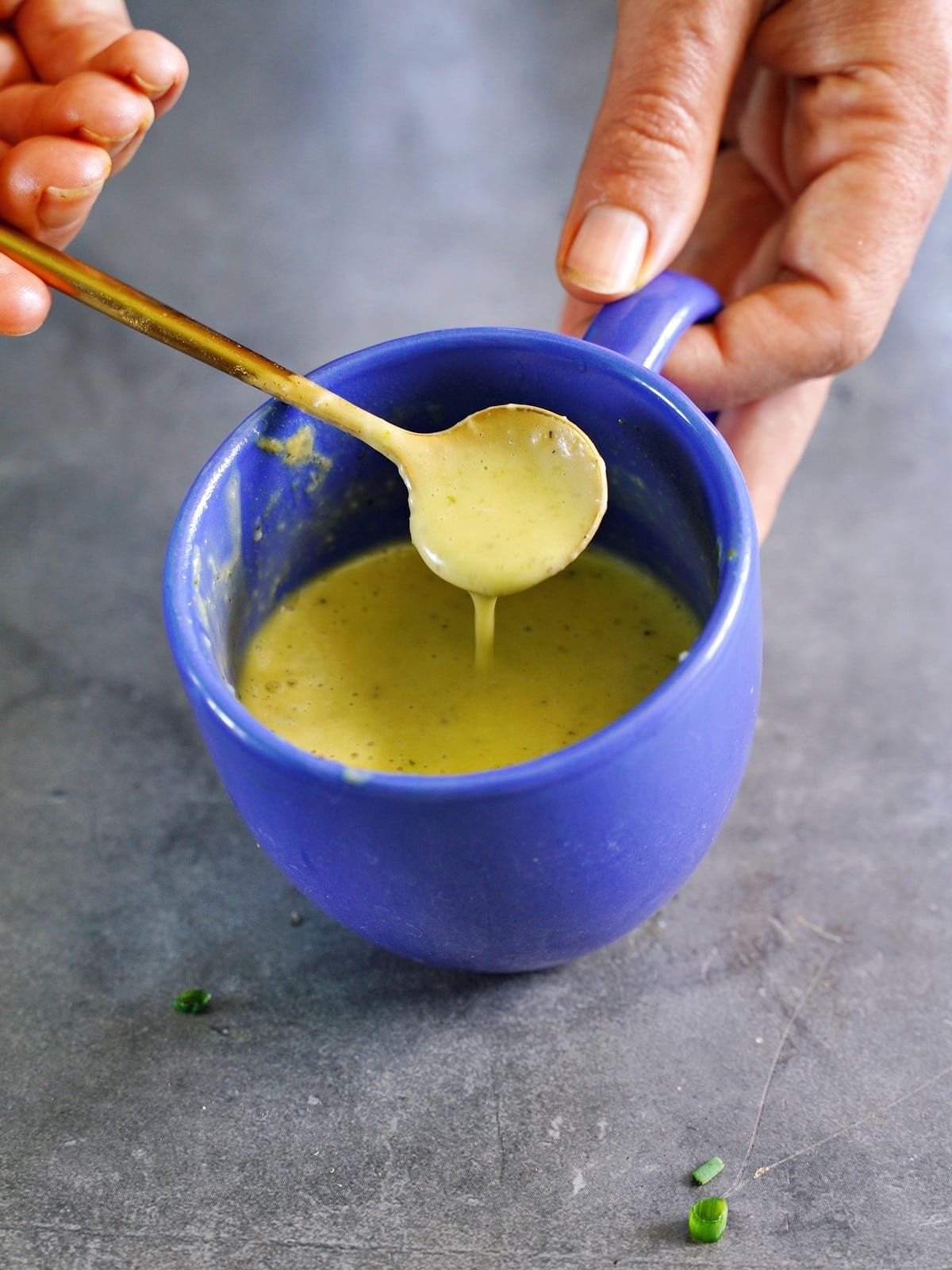

Storage and Usage Instructions
Once prepared, the lemon Dijon vinaigrette will store in the refrigerator covered for 5-7 days.
If you do not blend the dressing, the olive oil can somewhat solidify in the refrigerator, so bring it back to room temperature before using it. Please don’t use it past seven days, as the fresh garlic can cause botulism when stored anaerobically (as it is when submerged in oil).
Along with the obvious usage of dressing up a simple green salad (like a lettuce or arugula salad), there are several other ways to use this lemon dressing, including:
- To massage into a simple kale salad
- Drizzle over simple veggie salads like a tomato and cucumber salad
- To toss in with grain bowls, either warm or cold as quinoa salad
- Add to a simple pasta salad
- Drizzle over roasted, broiled, and grilled vegetables (like broccoli, cauliflower, asparagus, green beans, etc.)
- Mix into a pulse salad like a lentil, white bean, chickpea, or mixed bean salad
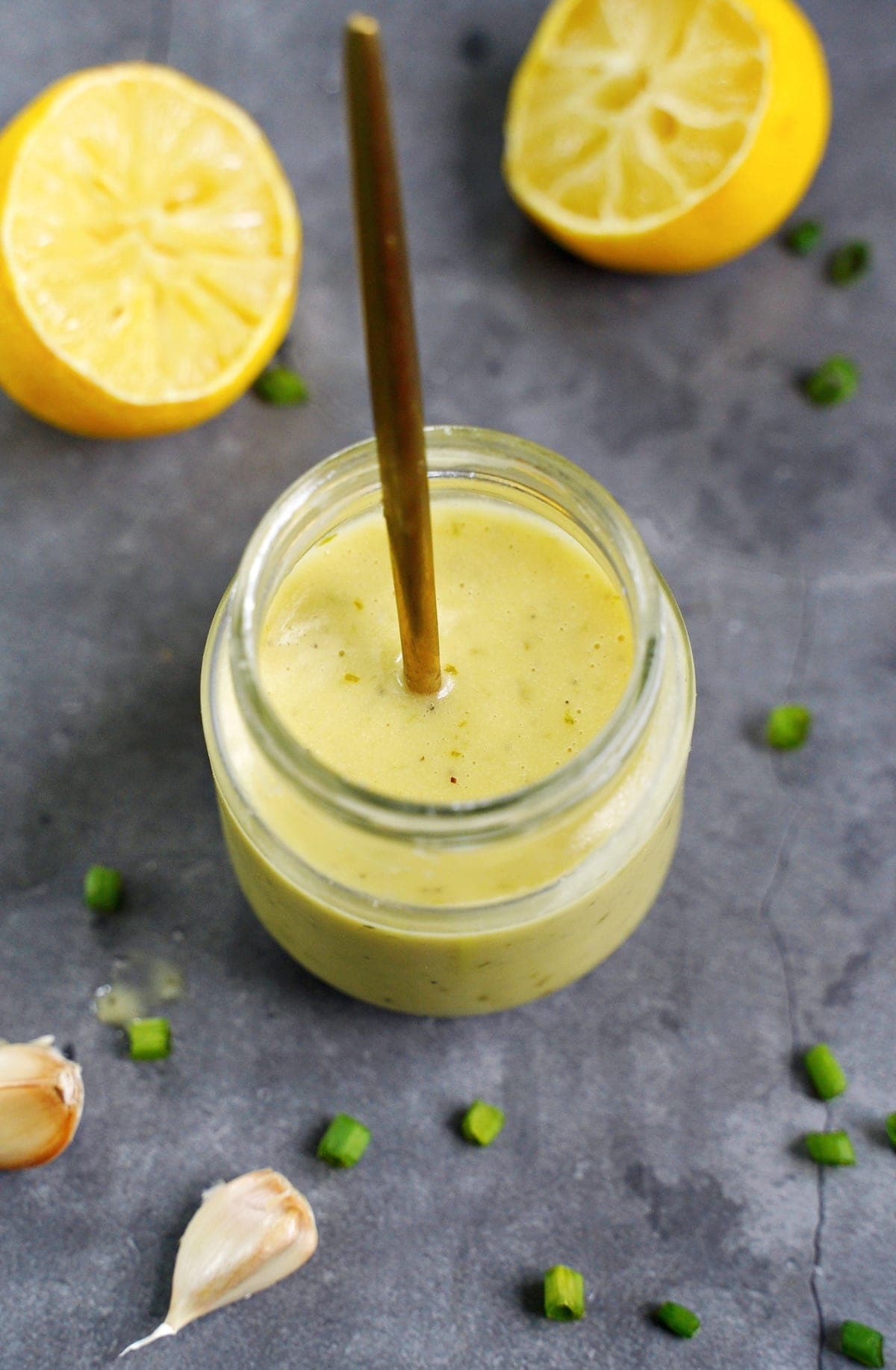
FAQs
What is the difference between a dressing and a vinaigrette?
A vinaigrette is specifically a combination of oil and something acidic (usually vinegar, but in this case, lemon). In comparison, a salad dressing is a general name for any dressing used over a salad.
Why emulsify the lemon salad dressing?
Emulsifying the lemon olive oil dressing helps bond the oil and acid together (for more of a creamy vinaigrette) and helps it coat your salad better. That way, you have all the delicious flavors of the dressing in every single bite.
Can I use bottled lemon juice?
I don’t recommend it, though it’s possible in a pinch. However, fresh lemon juice is wonderfully bright and vibrant, perfect for this simple lemon olive oil dressing.
Do I have to add a sweetener?
Technically, no. However, I highly recommend it as it works wonders at rounding out the flavors in the lemon salad dressing.
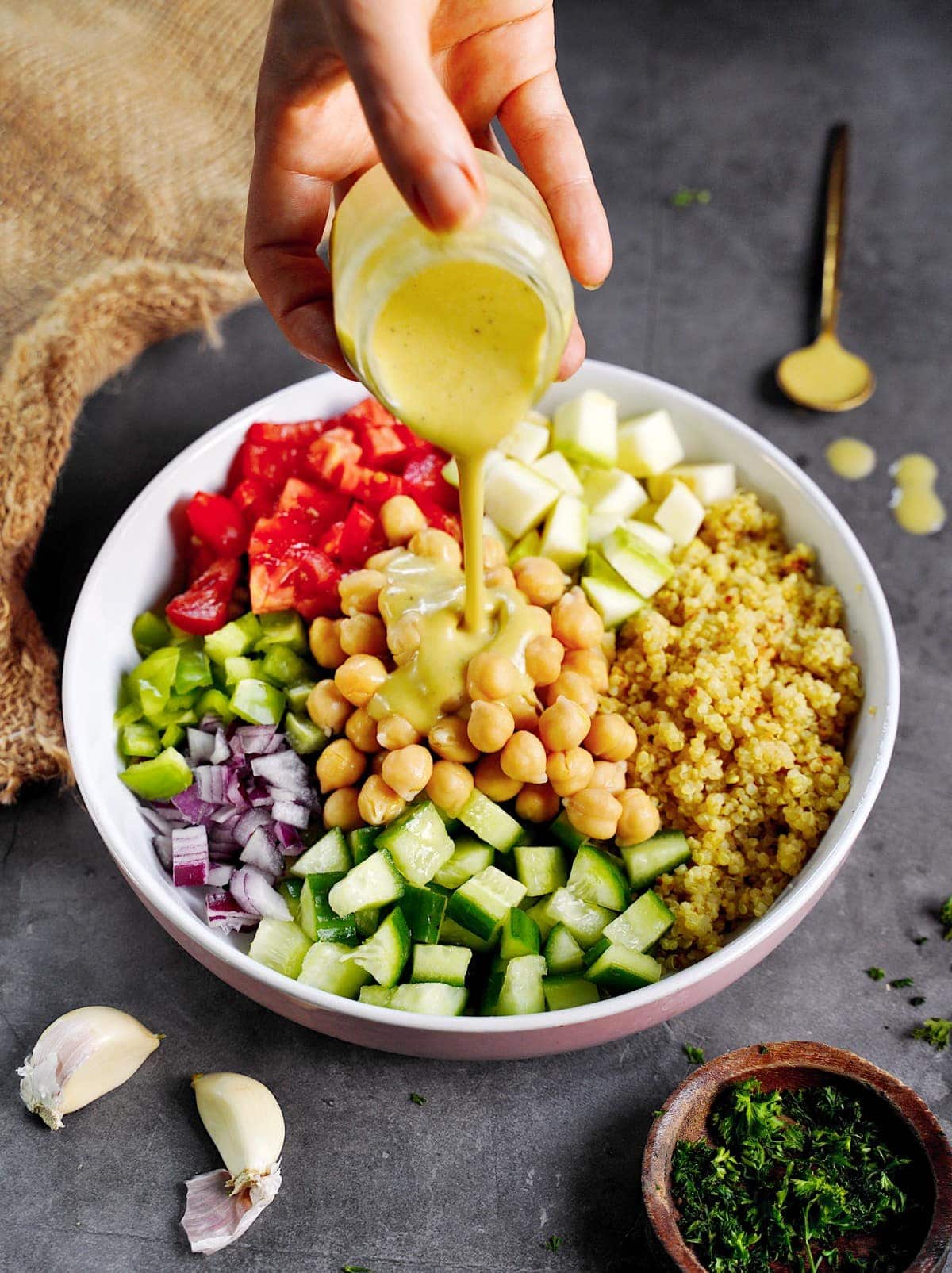
Recipe Notes & Variations
- Adjust the ratio of oil to acid: Depending on how you plan to use the lemon vinaigrette recipe and your preferred level of acidity. Feel free to add less to begin and increase to taste. I use just over a 2:3 ratio of lemon juice to olive oil, but you could use 1:3 or even 3:3.
- Let it mellow: While you can use the lemon dressing immediately, giving it (at least) 40-60 minutes to ‘marinate’ will help the ingredients meld and tastes even better!
- Tweak the flavors: One of the best benefits of making homemade salad dressing is how easy it is to tweak the flavor profile. For example, add more garlic, more herbs, more/less lemon, make it sweeter, etc.
- For the best emulsification: You could even use an immersion blender in the jar of ingredients, and it thickens and emulsifies wonderfully.
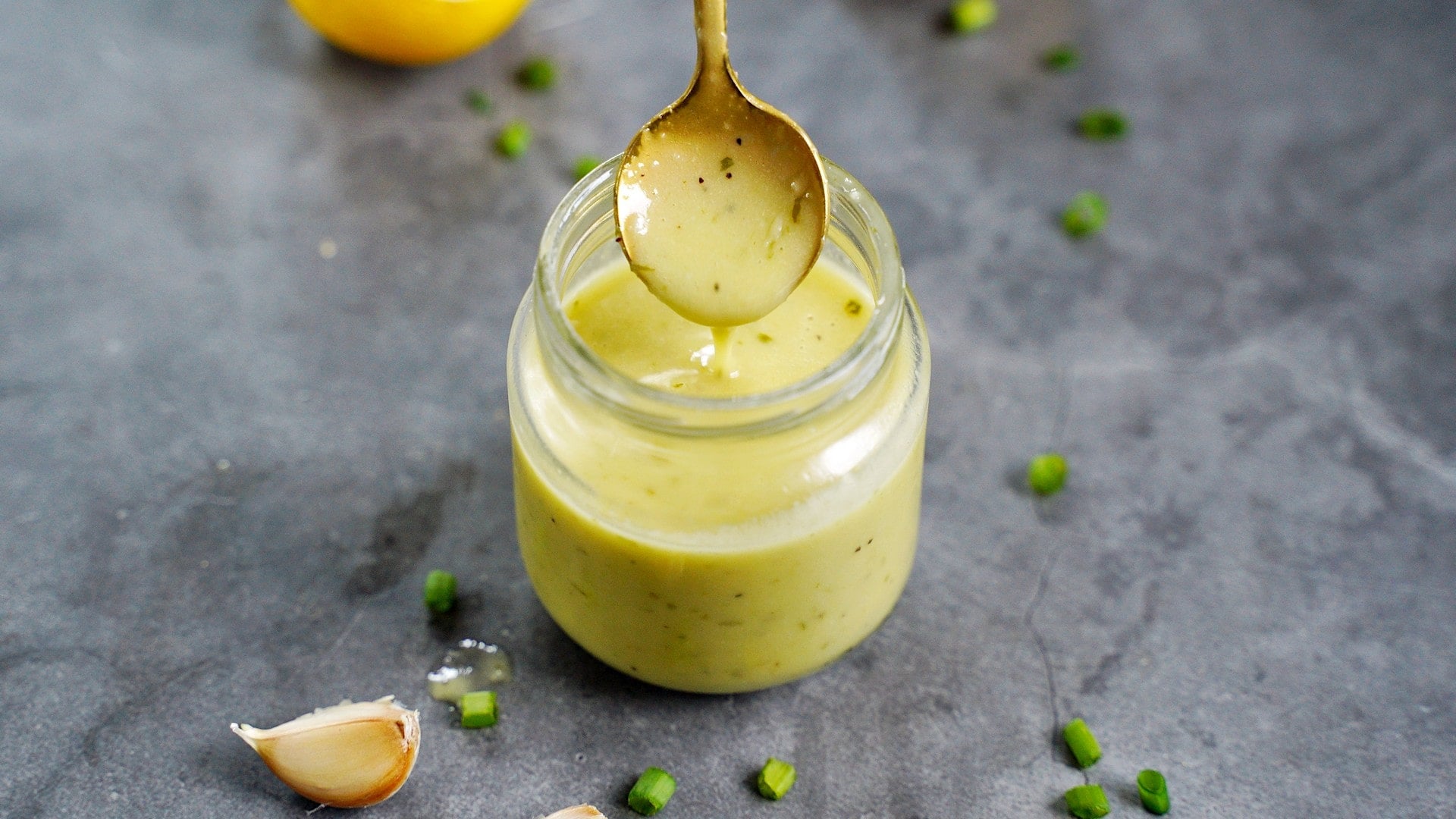
Other Vegan Sauce Recipes
- Vegan Ranch dressing
- Simple tahini dressing
- Vegan mayo
- Avocado pesto
- Hoisin sauce
- Chinese garlic sauce
- Vegan cheese sauce
If you try this simple lemon vinaigrette recipe, I’d love a comment and ★★★★★ recipe rating below. Also, please don’t forget to tag me in re-creations on Instagram or Facebook with @elavegan and #elavegan—I love seeing them.
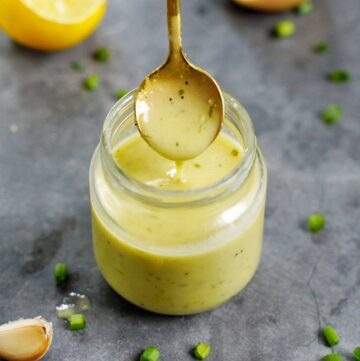
Lemon Vinaigrette
Ingredients
- 2 tbsp lemon juice (see notes)
- 2 tsp Dijon mustard
- 1 clove of garlic minced or pressed
- 1/2 tsp coconut sugar or sweetener choice
- 3/8 tsp sea salt (or less/more to taste)
- Black pepper to taste
- 1 tbsp chopped chives
- 3 1/2 tbsp (45 g) extra-virgin olive oil
- 1 1/2 tbsp water (optional, if using a blender)
Instructions
- You can watch the short video for visual instructions.Add the lemon juice, mustard, garlic, coconut sugar, salt, pepper, and chopped chives to a jar or mug and whisk.
- Slowly add in the olive oil and keep whisking until the dressing is emulsified.
- For a creamier dressing, blend the mixture with an immersion blender until creamy and add up to 1 1/2 tbsp of water.
- Taste the vinaigrette and adjust any element to your taste, salt, lemon, sugar, etc. Pour over your favorite salad and enjoy!
Notes
- You can use white wine vinegar instead of lemon for a more traditional vinaigrette.
Nutrition information is an estimate and has been calculated automatically
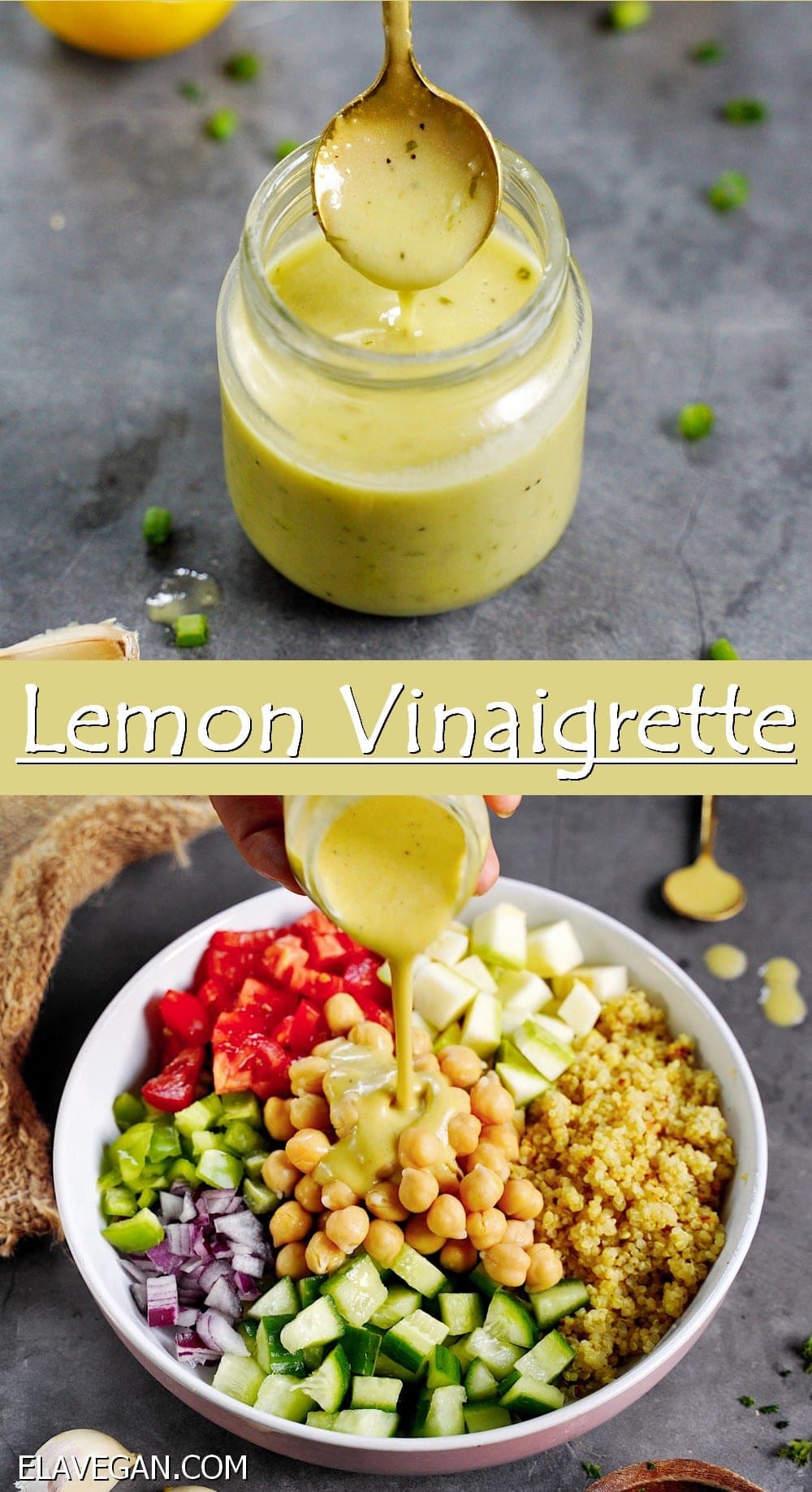



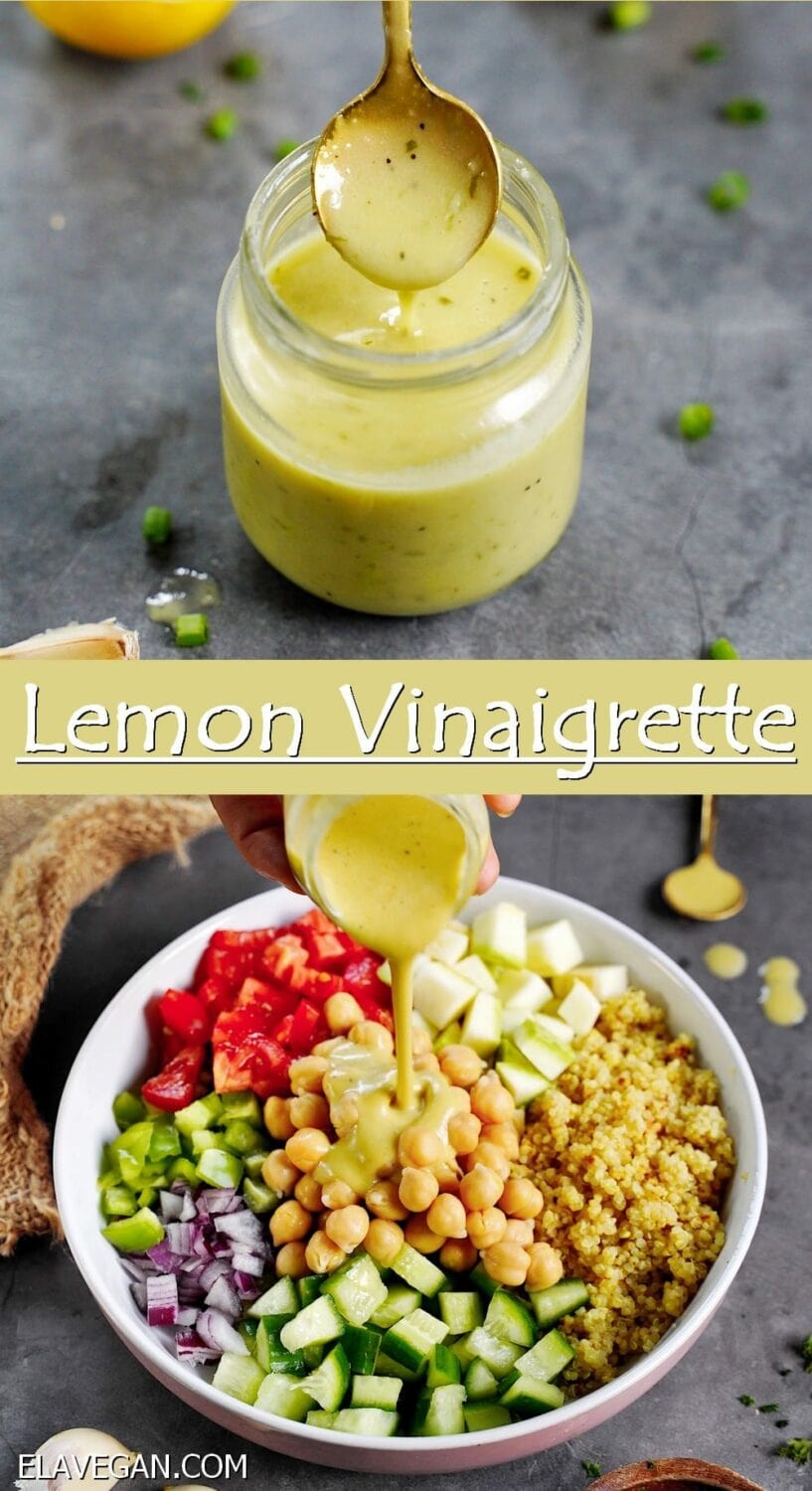
I love your recipe ELA!, thank you so much for sharing it, my kids and husband love it too !!!!!.
Hi Maru, I am so glad you like it. 🙂
I rarely comment on recipes but this was so delicious. I do recommend letting it sit for an hour or so. The flavors melded together better.. What I wanted to share was what I used the dressing on.
Arugula, sliced Persian cucumbers, thinly sliced red onion, thinly sliced fennel, marinated beets (red and gold), small tomatoes (red and yellow), chilled mandarin orange slices, diced avocado and shredded Chardonnay cheese (Sartori). It was incredibly delicious and beautiful salad served with your lemon vinaigrette. I made it last night and will have it again tonight with my husband! Thank you!
So glad you like it, Tricia. 🙂
We made this tonight-so delicious!! We added walnuts and pumpkin seeds and a little feta. Will definitely make this again—we all loved it!!!
Thanks for your great feedback, Lucy. 🙂
Hi Elavegan! I love your recipes. I cannot have any oil though. Can this dressing be made sans oil?
Hi Paige, this is one of the very few dressing that cannot be made without oil. However, I have lots of oil-free dressing, like this potato salad dressing, this avocado dressing, this dairy-free yogurt dressing, this coleslaw dressing, this dairy-free sour cream dressing, or this tahini dressing. I hope this helps! 🙂